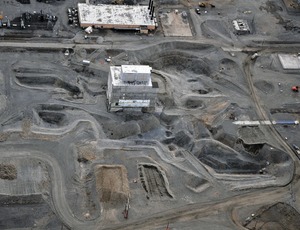

Aiming for a safer approach to "cocoon" a defunct nuclear reactor at the U.S. Energy Dept.'s Hanford waste site in Washington state while its radioactivity decays over 75 years, crews will enclose it in a steel shell. Using a different method than was needed at six smaller site reactors, the K East structure's enclosure will better protect workers from radiation exposure and other construction safety risks, officials say.
Enclosures at the other reactors have involved partial demolition to the core, with concrete wraps and metal roofs added. Pumped-in grout seals openings. The steel shell will better suit K East, which served as an experimental reactor and has more openings—about 40—than the others, says Kurt Kehler, vice president of CH2M Hill Plateau Remediation Co., which is managing the sitework.
"I think it will be a pretty traditional steel structure other than the shape and having a reactor core inside it," Kehler says, adding that steps will be taken to protect against water intrusion. "Maybe the siding might be a little heavier or the joint design might be more significant." Officials are considering painting the steel in earth tones so that it will blend into the desert environment, as requested by nearby native American tribes.
Tom Teynor, DOE project director, notes concerns about added worker risk in concrete installation and grouting at heights of up to 100 ft in the high-wind location. Because the roof will not be attached to the core, there will be no need for extensive interior bracing, which would have increased difficulty and radiation risk, he adds. Using steel should save about $3.5 million off the $20-million price for cocooning reactors and shave about nine months of construction time, Teynor says. However, crews will need to enter the building to remove hazardous substances.
Construction should start in spring 2013 and finish in June 2014. After K East, crews will enclose with steel the sister reactor, K West. Radioactive sludge stored in underwater basins at the site must first be removed. The two reactors, which produced plutonium for use in atomic weapons, have not operated since 1971. Another reactor, the B reactor, now operates as a museum at the site.
DOE had considered demolishing the K East reactor but, in 2010, decided the approach was too costly, logistically difficult and unsafe.


Post a comment to this article
Report Abusive Comment